Storage devices are components used to store data, either temporarily or permanently. Examples of storage devices include Hard Disk Drives, Solid State Drives, USB flash drives, Floppy disks, Memory cards, and more.
Examples of Storage Devices
Here are some examples of storage devices:
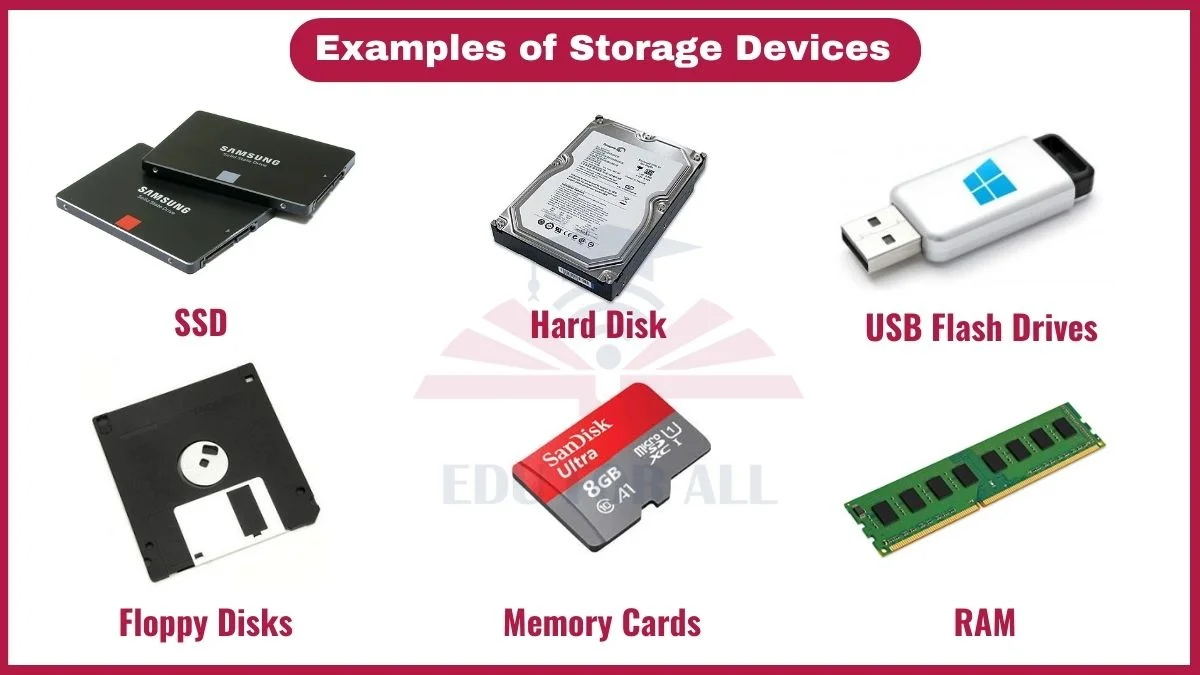
1. Hard Disk Drives (HDDs)
- Capacity: Up to 16TB for consumer HDDs
- Access Speed: Average 100-200MB/s
Hard disk drives contain round platters with a magnetic coating that is used to store data. They have high capacity but are slower than solid-state drives. HDDs come in different form factors and are used for mass storage in computers.
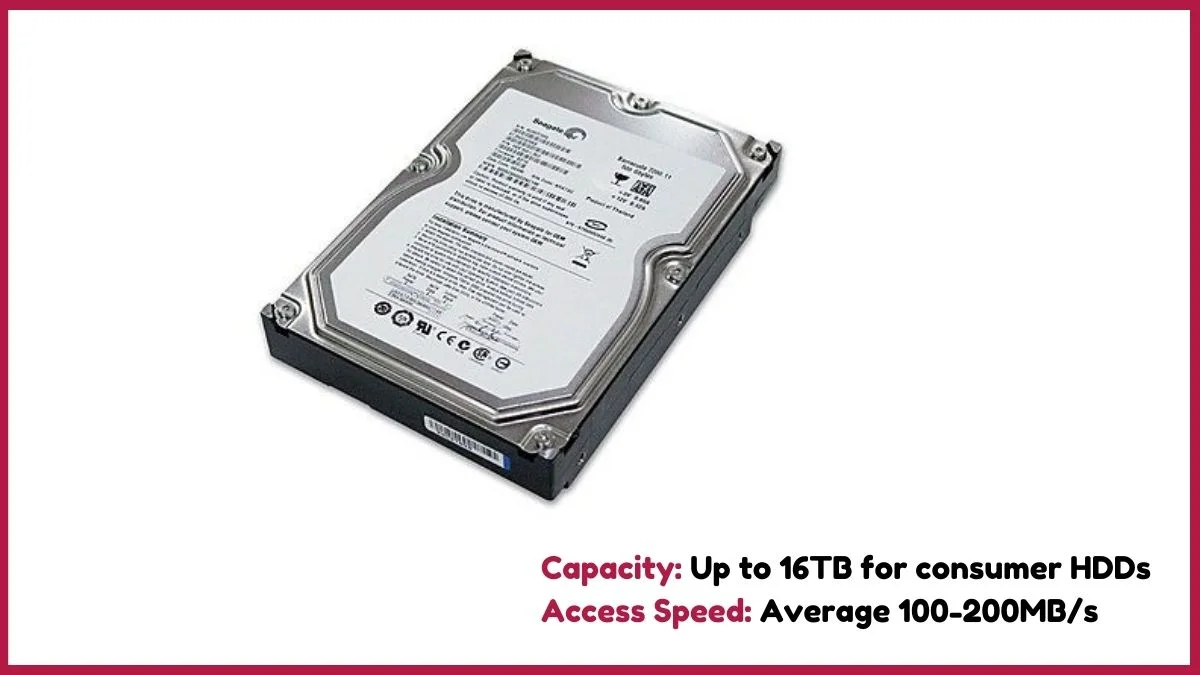
2. Solid State Drives (SSDs)
- Capacity: Up to 64TB
- Access Speed: Over 3,500MB/s
SSDs use integrated circuits to store data persistently. They have no moving parts so they are faster, smaller, and more durable than HDDs. However, they are currently more expensive per GB. SSDs provide the best performance for PCs.
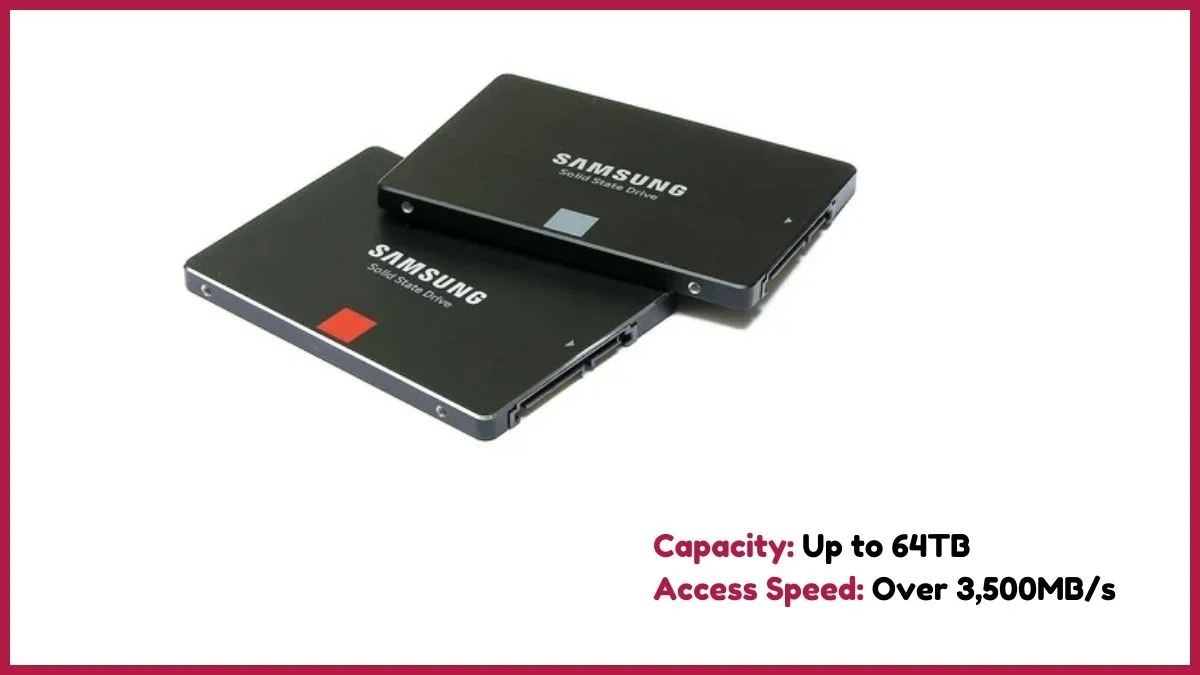
3. USB Flash Drives
- Capacity: Up to 2TB
- Access Speed: 100-600MB/s
Also known as thumb drives, flash drives use flash memory to store data. They are small, portable, and great for transferring files between devices, but have lower capacities than HDDs and SSDs.
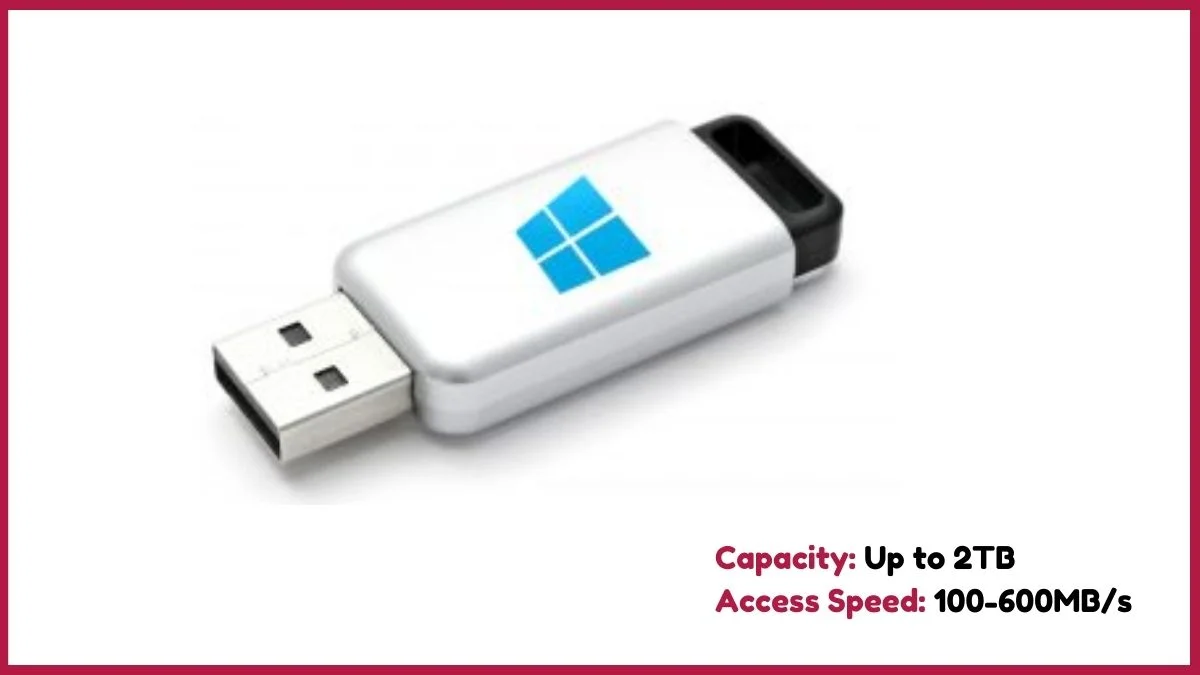
4. Optical Discs (CDs, DVDs, Blu-Rays)
Capacity:
- CDs – up to 800MB
- DVDs – up to 17GB
- Blu-Rays – up to 128GB Access Speed: 1x to 16x
Optical discs store data on plastic discs that are written and read by a laser. They are portable, removable, and retain data without power. But they have slower access speeds and lower reliability than flash drives or HDDs.
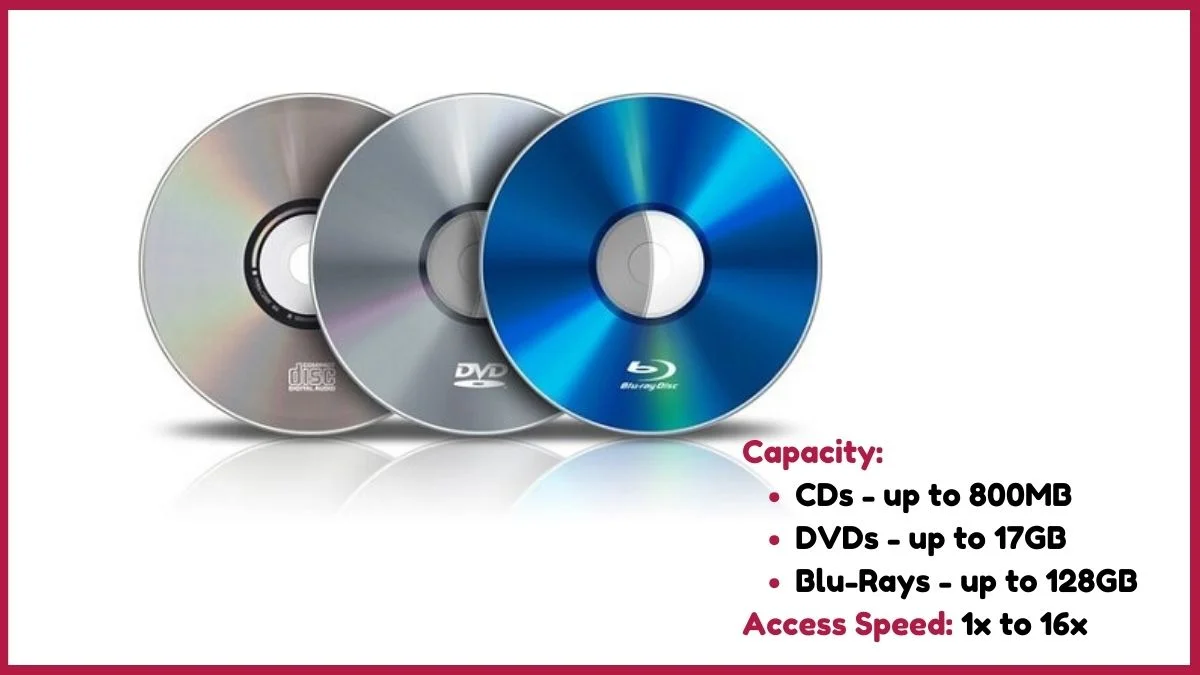
5. Floppy Disks
- Capacity: 1.44MB
- Access Speed: Up to 1 MB/s
Floppy disks were once used to transfer small files between computers. However, they have very low capacity by today’s standards so are obsolete. USB drives provide faster transfers.
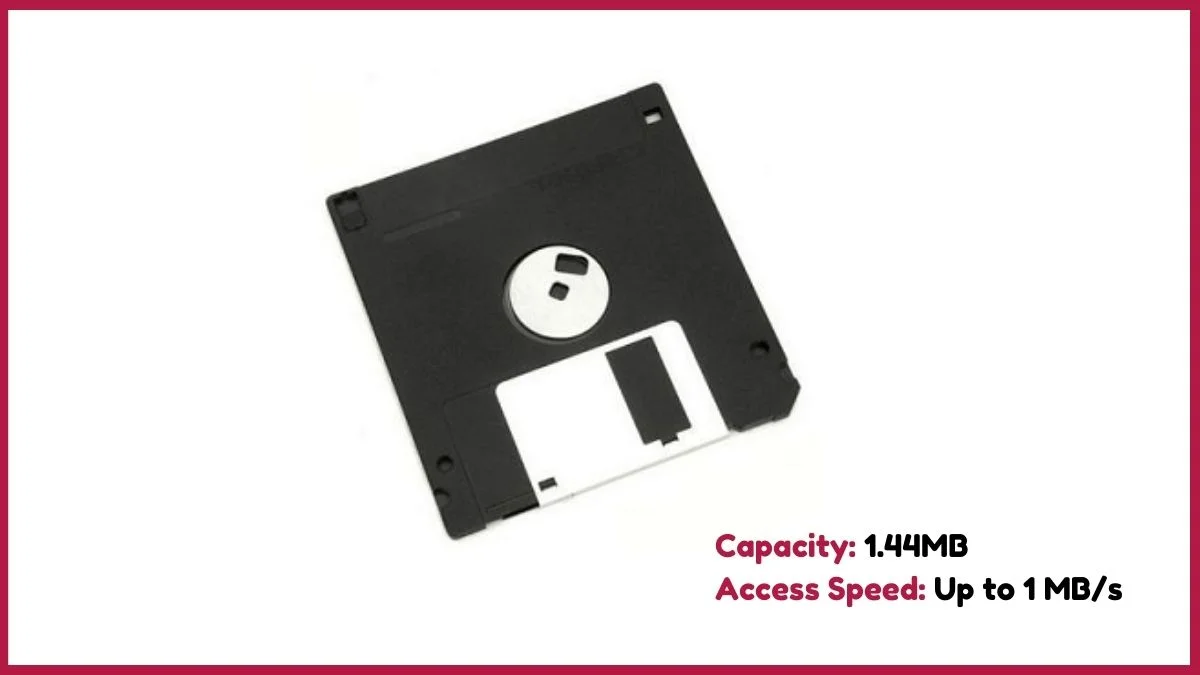
6. Magnetic Tapes
- Capacity: Up to 360TB with compression
- Access Speed: 100-400 MB/s
Magnetic tapes store data sequentially on reels of plastic film. They are used mostly for backups and archiving because of their high capacity, portability, and low cost per gigabyte. However, they have very slow access speeds.
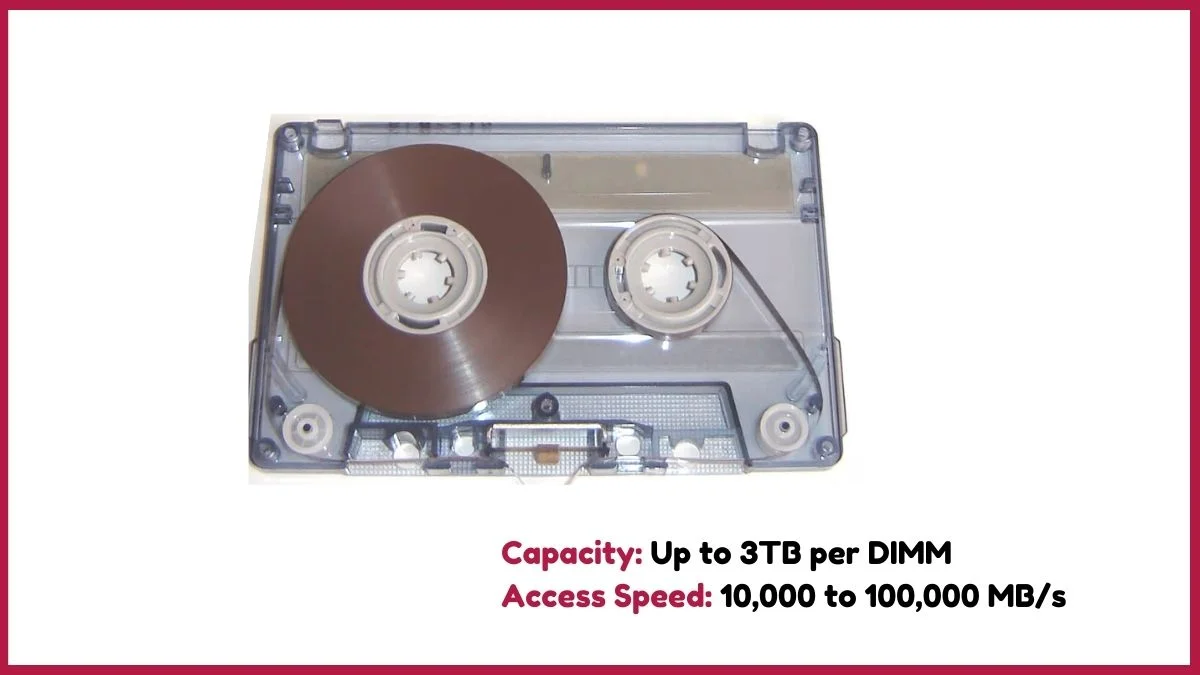
7. Network Attached Storage (NAS) Devices
- Capacity: 4 bays with 16TB each = 64TB
- Access Speed: 600MB/s+
NAS devices are dedicated file storage servers connected to a local network. They provide centralized data access and storage for multiple users and devices on a network with redundancy and RAID configurations.
8. Memory Cards
- Capacity: Up to 2TB
- Access Speeds: Vary by card (SD cards ~100MB/s)
Memory cards come in many form factors (SD, MicroSD, CompactFlash, etc.) to store data on cameras, phones, handheld gaming devices, and more. Their capacities and speeds vary greatly by type.
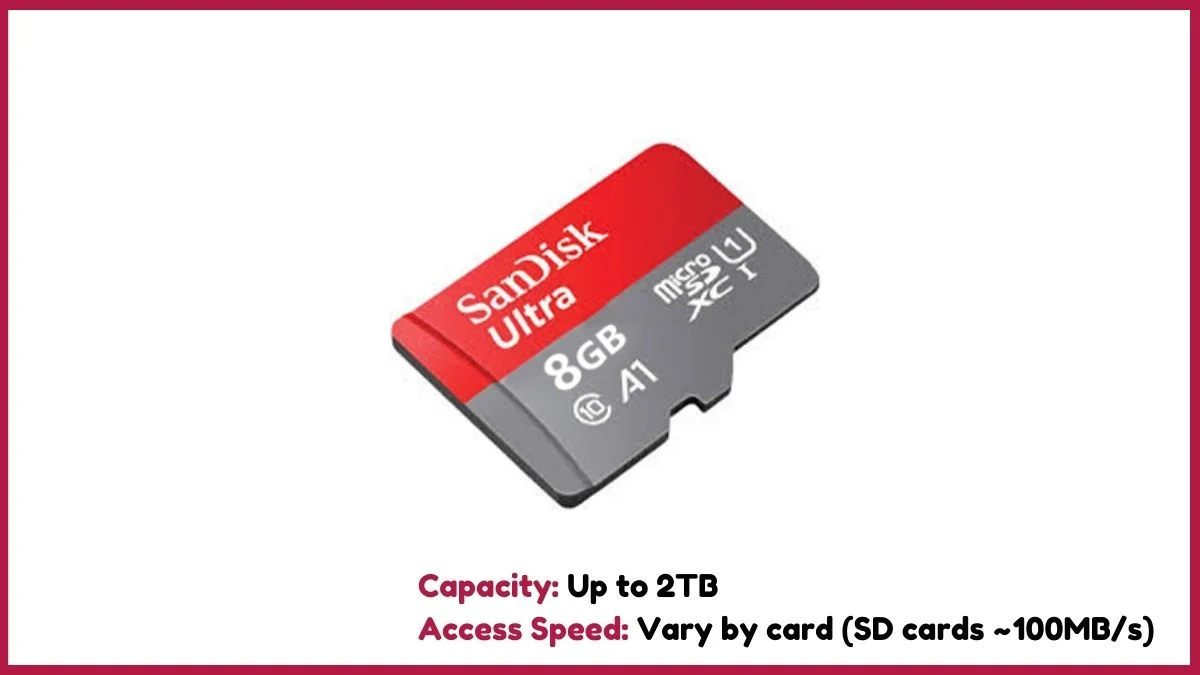
9. RAM
- Capacity: Up to 3TB per DIMM
- Access Speed: 10,000 to 100,000 MB/s
RAM provides high-speed temporary data storage that the CPU can access directly. Data in RAM is lost when power is turned off. RAM capacity directly impacts computer performance.
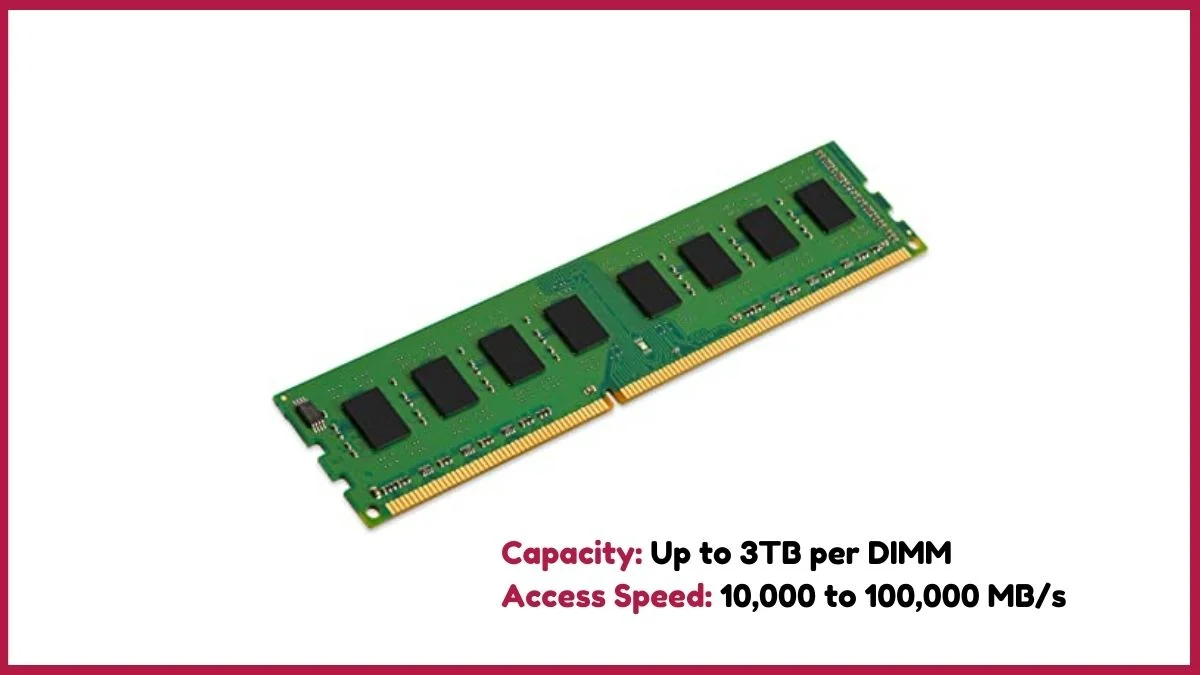
10. Caches
- Capacity: 8MB to 128MB on consumer processors
- Access Speed: 1,000,000+ MB/s
Caches are small pools of ultra-high-speed memory integrated directly into the CPU to boost performance. Data in CPU caches is discarded once power is removed.
11. Cloud Storage
- Capacity: Unlimited
- Access Speed: Varies based on internet connection
Cloud storage leverages remote servers accessed over the internet to store data. It allows accessing files from anywhere but relying on internet connectivity. Popular services are Dropbox, Google Drive, and iCloud.
12. Magnetic Tape Cartridges
- Capacity: Up to 60TB compressed
- Access Speed: 240MB/s uncompressed
For enterprise backups, cartridge formats like LTO-9 offer very high capacities by using magnetic tape technology that can be accessed via specialized tape drives.

